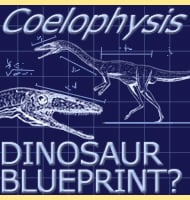Anthracodromeus
In Depth Originally named as Sauropleura longipes by Edward Drinker Cope in 1875, S. longipes became a new genus in 1972. Anthracodromeus means ‘coal runner’, a reference to the fact that it was discovered in a coal mine, while the species name means ‘long foot’. Anthracodromeus was probably a small predator of invertebrates. Further Reading … Read more
